So this week we practise our writing skills. I used the peg method from the video with the Dutch copyist,a s well as a brush.
I have books and I have done some calligraphy in the past but this was a long time ago. These are my two most useful books:
They provide a very comprehensive guideline to how to make the scripts and how to get started with designing a page and miniatures. I got them way before there were classes on the Internet. I must say that watching a video is invaluable.
I have chosen to work on 4 scripts: uncial, carolingian, gothic and humanistic. I thought I’d watch some videos on YouTube to get the hang of it, and I realised at once that everyone does it slightly differently.
Uncial Script:
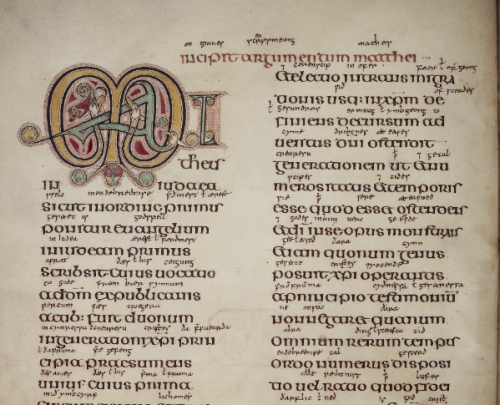
Beginning of the Gospel of Matthew from the Lindisfarne Gospels, England, c. 700, Cotton MS Nero D IV, f.18v British Library
Appears between 4th and 8th Centuries. A hybrid script with majuscules and minuscules. Was written with a broad edge tool. Provides economy of strokes and more speed. The writing angle of the type is 20 degrees. Very round.
Uncial calligraphy with Janet Takahashi
Carolingian Script:
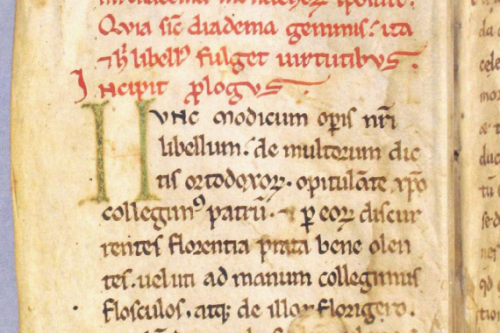
The minuscule alphabet forms the basis for later development and starts at the end of the 8th century. Generally speaking the writing angle means the nib is held at 30-35degrees. This is a light weight type. It can have a slight tilt in its angle. Here are a few videos on how to write:
1. How to write Caroline.
2. Carolingianform.
So in my practice, I have made the letters in two different ways. I have written the ductus numbers in different places.
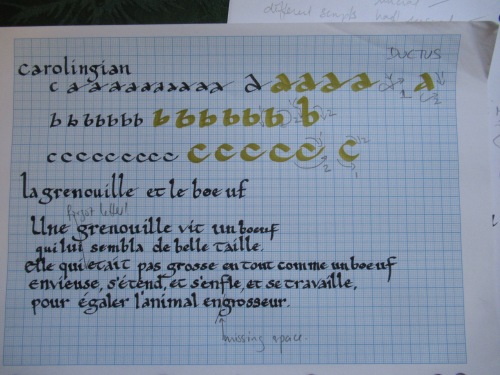
Gothic Script:
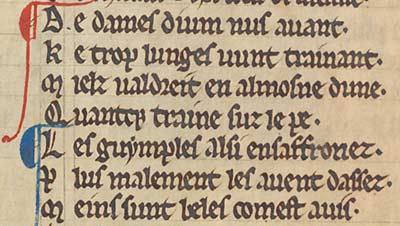
Detail from WLC/LM/4, f. 8v University of Nottingham
a 12th to 16th century script (which lasted longer in Germanic countries). A very heavy weight type with little contrast between oblique and flat strokes as the writing angle changed drastically from the previous carolingian script. The writing angle is 45 degrees. It has a largge number of ductus, around 5 on average, making it a tedious script to write.
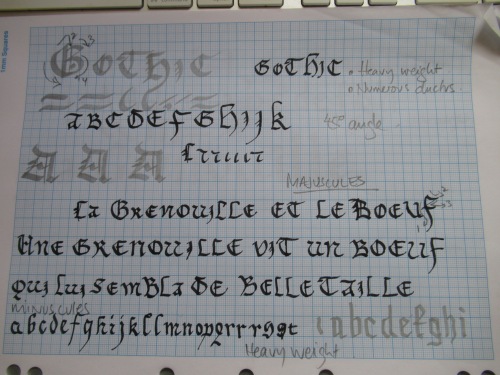
Humanist Script:
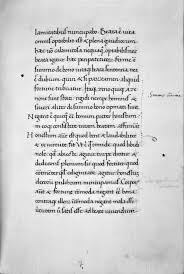 from
from
The Renaissance Reform of the Book and Britain The English Quattrocento David Rundle University of Kent
This book hand script is also called lettera antiqua. The morphology of this script is long, fine lines in an upright angle. The writing angle is held between 30 to 40 degrees. The addition of serifs and small finishing strokes merged the previous scripts Latin capital and the Carolingian letter together. It has a clean presentation and an absence of ornamentation.
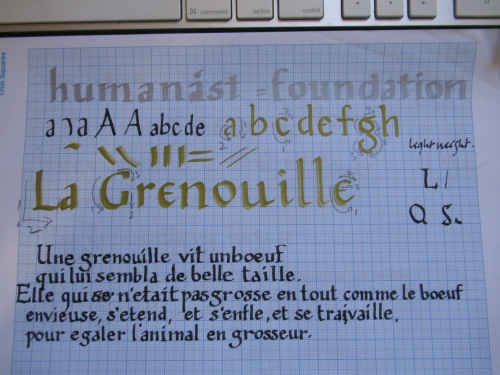
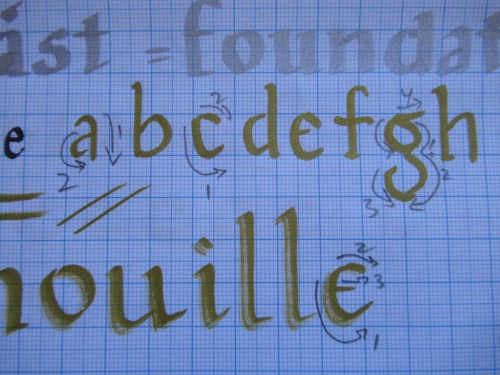
This week’s text has been the first paragraph of “La grenouille et le boeuf” from La Fontaine’s Contes Choisies. Next week I will use more poems from La Fontaine’s Fables.:
1. La cigale et la fourmi
2. le lievre et la tortue
3. Le cerf se voyant dans l’eau
4. Les deux mulets
5. le loup et l’agneau
I really enjoyed this series of videos.
cheers








